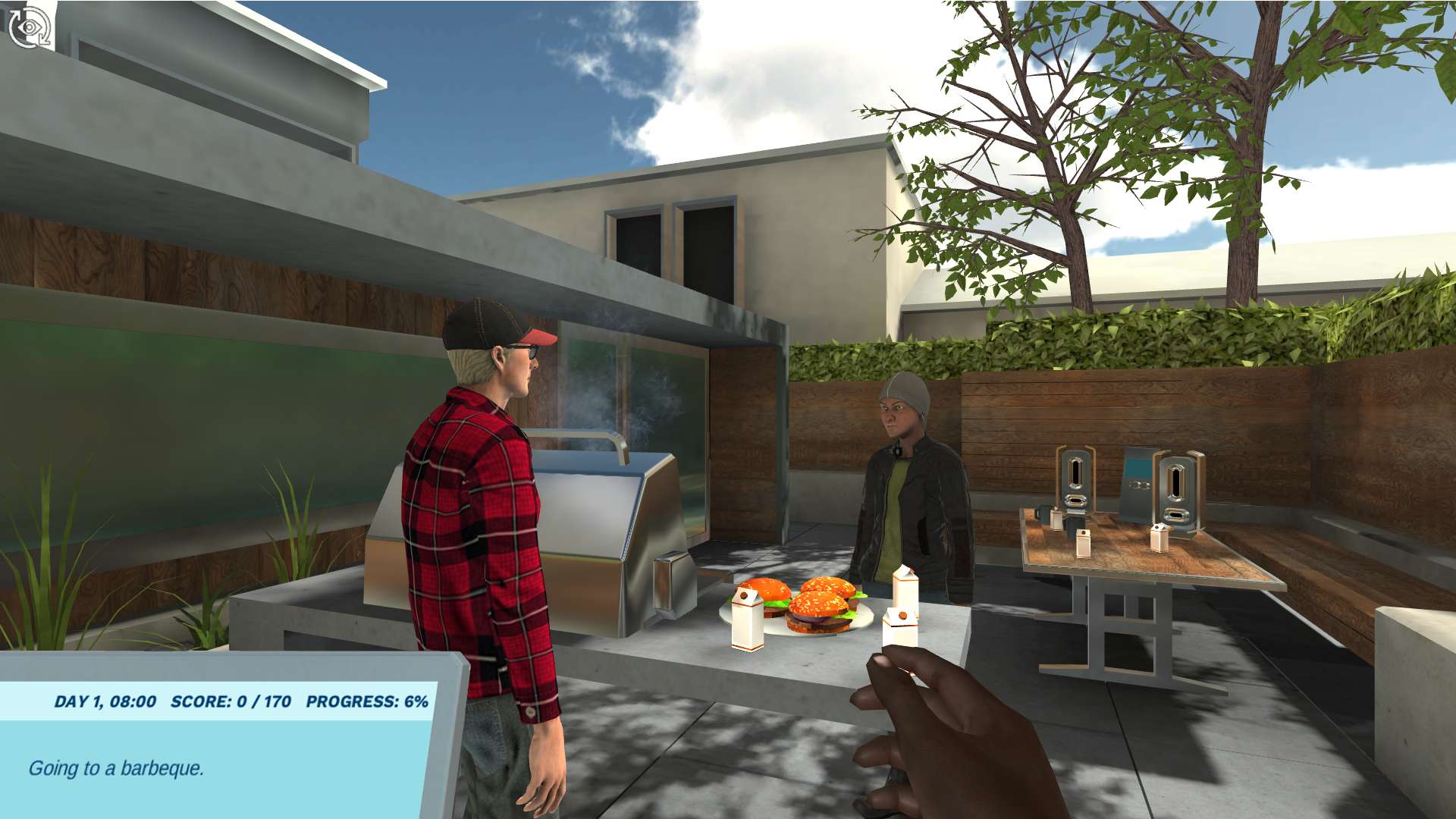Heading 1
Heading 2
Heading 3
Heading 4
Heading 5
Heading 6
Lorem ipsum dolor sit amet, consectetur adipiscing elit, sed do eiusmod tempor incididunt ut labore et dolore magna aliqua. Ut enim ad minim veniam, quis nostrud exercitation ullamco laboris nisi ut aliquip ex ea commodo consequat. Duis aute irure dolor in reprehenderit in voluptate velit esse cillum dolore eu fugiat nulla pariatur.
Block quote
Ordered list
- Item 1
- Item 2
- Item 3
Unordered list
- Item A
- Item B
- Item C
Bold text
Emphasis
Superscript
Subscript
About This Simulation
Join Marie in the Acids and Bases Simulation and explore the nature and concepts of these important chemical compounds. Measure the pH of chemical solutions, and use your acquired knowledge to evaluate mixtures of acids and base.
Learning Objectives
- Give examples of acids and bases from everyday life
- Define pH and identify acids and bases using the pH scale
- Apply the the Bronsted-Lowry definition of acids and bases to chemical compounds
- Describe the amphoteric and self-ionization capacity of water
- Calculate the pH of a strong acid and base in solution
- Assess whether a neutralization reaction will occur
- Evaluate the outcome of simple acid-base reactions
About This Simulation
Lab Techniques
- pH measurement
Related Standards
- HS-PS1-2, HS-PS1-5
- 8.3 Weak Acid and Base Equilibria
- 8.4 Acid-Base Reactions and Buffers
- 8.4 Strong and weak acids and bases
Learn More About This Simulation
Have you ever consumed an acid or a base? Yes you have! Acids and bases are found all around us: In the food we eat, the beverages we drink, many of the everyday household products at home and even inside us! In this virtual simulation, you will learn the fundamentals of acids and bases and go through some of the ways they can be characterized and used in the lab.
Acidic life
How do acidic or alkaline foods affect the pH of our blood, and what does this even mean? Together with your lab assistant, Marie, you will explore different concepts of acids and bases, and investigate how alkaline foods can also contain acids. You will measure the pH of solutions, and dive into these to experience what happens at the molecular level.
Salty mixtures
In order to determine what reactions occur when you mix acids and bases of different strengths, you will have the freedom to mix solutions of these and interpret the resulting salt reaction products. And don’t worry if you make mistakes – in this virtual lab, you can just reset and start over! On-the-go quizzes will make sure you are up to speed, and you can always dive into the theory pages for more in-depth explanations.
Corrosive everyday chemicals
Acids and bases can be corrosive and very dangerous to handle. But they also play a fundamental role in all living things, in nature, and in the chemical industry.
Will you be able to to measure the acidity of various substances around you?
For Science Programs Providing a Learning Advantage
Boost STEM Pass Rates
Boost Learning with Fun
75% of students show high engagement and improved grades with Labster
Discover Simulations That Match Your Syllabus
Easily bolster your learning objectives with relevant, interactive content
Place Students in the Shoes of Real Scientists
Practice a lab procedure or visualize theory through narrative-driven scenarios


FAQs
Find answers to frequently asked questions.
Heading 1
Heading 2
Heading 3
Heading 4
Heading 5
Heading 6
Lorem ipsum dolor sit amet, consectetur adipiscing elit, sed do eiusmod tempor incididunt ut labore et dolore magna aliqua. Ut enim ad minim veniam, quis nostrud exercitation ullamco laboris nisi ut aliquip ex ea commodo consequat. Duis aute irure dolor in reprehenderit in voluptate velit esse cillum dolore eu fugiat nulla pariatur.
Block quote
Ordered list
- Item 1
- Item 2
- Item 3
Unordered list
- Item A
- Item B
- Item C
Bold text
Emphasis
Superscript
Subscript
A Labster virtual lab is an interactive, multimedia assignment that students access right from their computers. Many Labster virtual labs prepare students for success in college by introducing foundational knowledge using multimedia visualizations that make it easier to understand complex concepts. Other Labster virtual labs prepare learners for careers in STEM labs by giving them realistic practice on lab techniques and procedures.
Labster’s virtual lab simulations are created by scientists and designed to maximize engagement and interactivity. Unlike watching a video or reading a textbook, Labster virtual labs are interactive. To make progress, students must think critically and solve a real-world problem. We believe that learning by doing makes STEM stick.
Yes, Labster is compatible with all major LMS (Learning Management Systems) including Blackboard, Canvas, D2L, Moodle, and many others. Students can access Labster like any other assignment. If your institution does not choose an LMS integration, students will log into Labster’s Course Manager once they have an account created. Your institution will decide which is the best access method.
Labster is available for purchase by instructors, faculty, and administrators at education institutions. Purchasing our starter package, Labster Explorer, can be done using a credit card if you are located in the USA, Canada, or Mexico. If you are outside of North America or are choosing a higher plan, please speak with a Labster sales representative. Compare plans.
Labster supports a wide range of STEM courses at the high school, college, and university level across fields in biology, chemistry, physics, and health sciences. You can identify topics for your courses by searching our Content Catalog.















